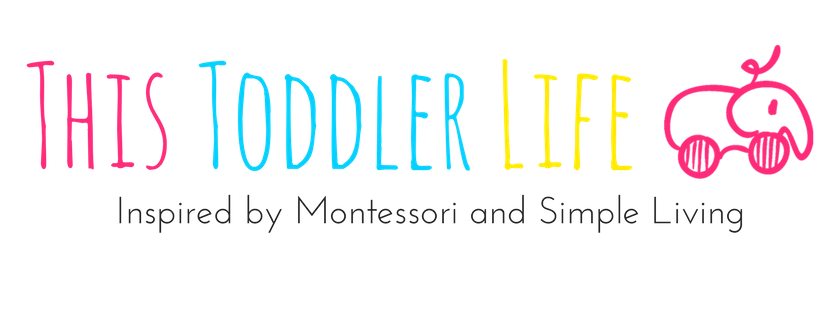- Home /
- Blog /
- MONTESSORI /
- HOW TO PREPARE FOR MONTESSORI WITH YOUR 18 MONTH OLD
xxx videos
massive brown wiener for foxy sweety rilynn rae.xxxvideos
HOW TO PREPARE FOR MONTESSORI WITH YOUR 18 MONTH OLD
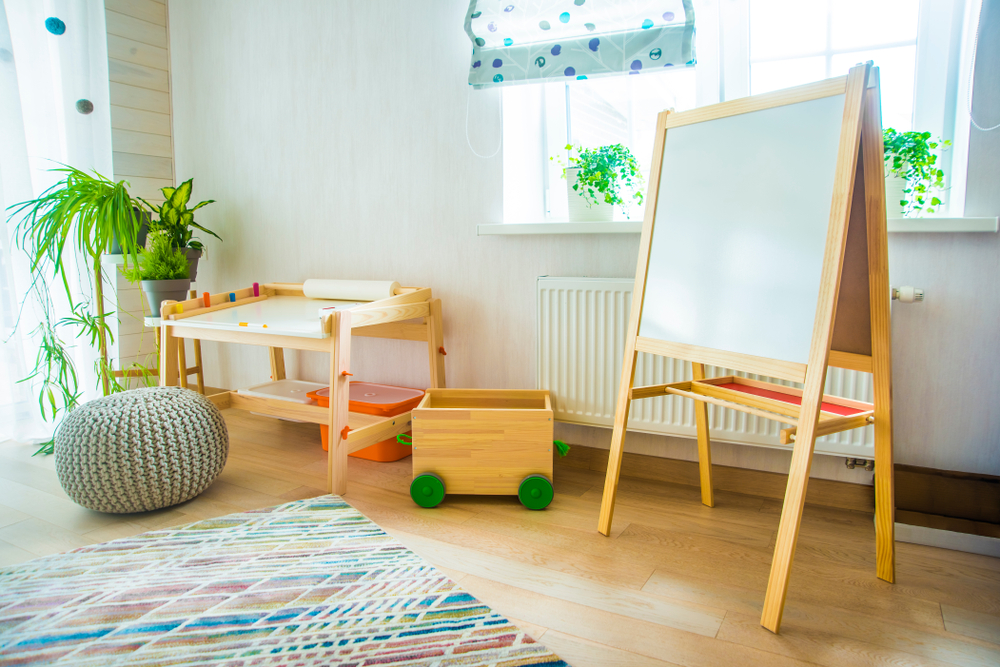
Montessori with your 18-month-old can be such a rewarding time. Your child’s independence is growing every day and I’m sure you have noticed he or she is able to do much more for themselves than only a few short months ago.
In order to facilitate their need for independence, the best thing you can do is to be prepared. Be ready to give them a new challenge, create a prepared environment without distractions, and know what’s coming next so you are always able to help guide them through their journey.
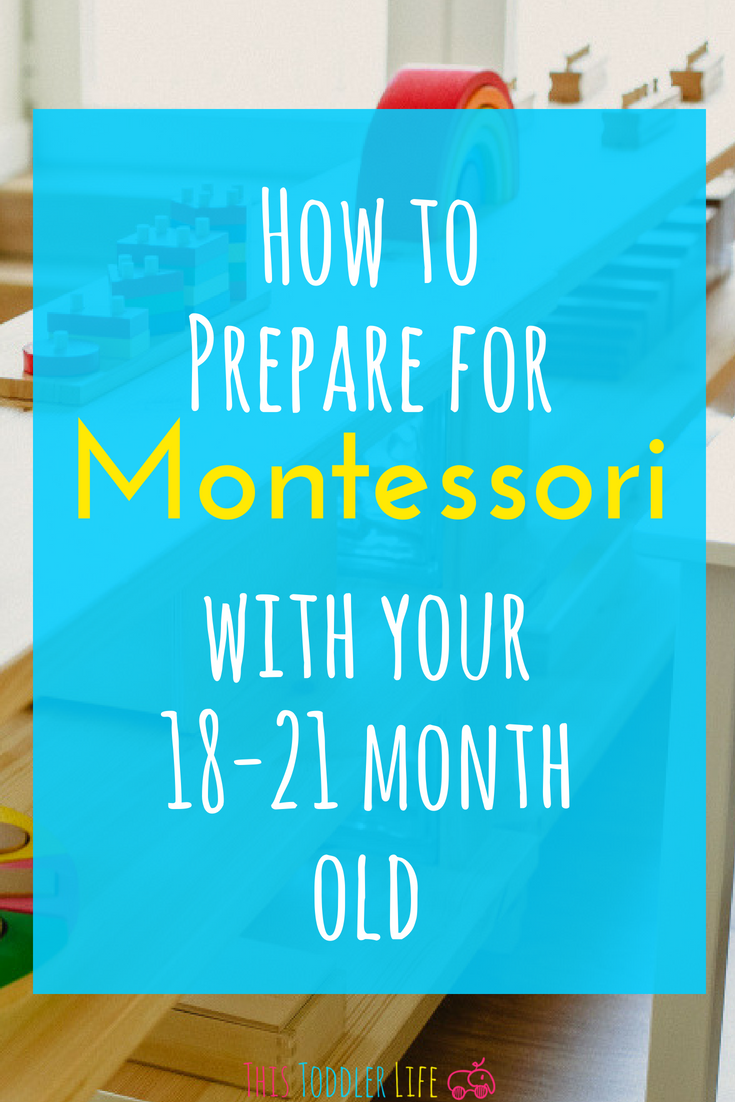
Montessori with your 18 – 21-month-old
It may be a good idea to go back to the previous Montessori by age articles listed below to see what activities or materials you didn’t get a chance to use yet. Also, if something seems too difficult for your child going back to look at easier activities. This will be a big help with any frustrations they may be expressing.
Check out Montessori for 12-15 months here
Click here to check out Montessori for 15-18 months.
As a reminder, these activities and material suggestions are just starting points. Don’t expect your child to be able to do all of these things on the first try. This is just an age-appropriate time to begin working on mastering these suggested activities.
PREPARING YOUR ENVIRONMENT

Preparing your environment is something that constantly needs to be evaluated as your child grows through different developmental stages. This will help support your child’s independence and through his/her sensitive periods which we will talk about below.
There are 4 main areas you can focus on when preparing your home:
- The Area for Movement
- Area for Sleep
- Area for Feeding
- and the Area for Physical Care.
The area for movement should be set up in your main living space. This will help your child feel more a part of the family. It will also allow for independence to grow. Here are some suggested aids for independence to have in your area for movement:
- Low Shelves
- Child Sized Chair & Table OR a Rug
- Child-Sized Lounge Chair
The area for sleep should have very few distractions (no toys). If you haven’t switched your child to a floor bed yet, it’s not too late. The low bed offers your child a better perception of their environment and allows them to move forward in their path towards independence. Other items for your child’s area for sleep include a wooden stool for dressing and a child-sized wardrobe for easy access.
The area for feeding will mostly be in your dining area or kitchen. You can aid your child with items such as a learning tower and child-sized dinnerware. Allowing your child to help and set up as many practical life activities in this area will be very beneficial to your toddler.
Lastly, the area for physical care will help your toddler gain independence. Setting up a self-care station in the bathroom is the perfect way to support your child in this area.
TOYS & MATERIALS
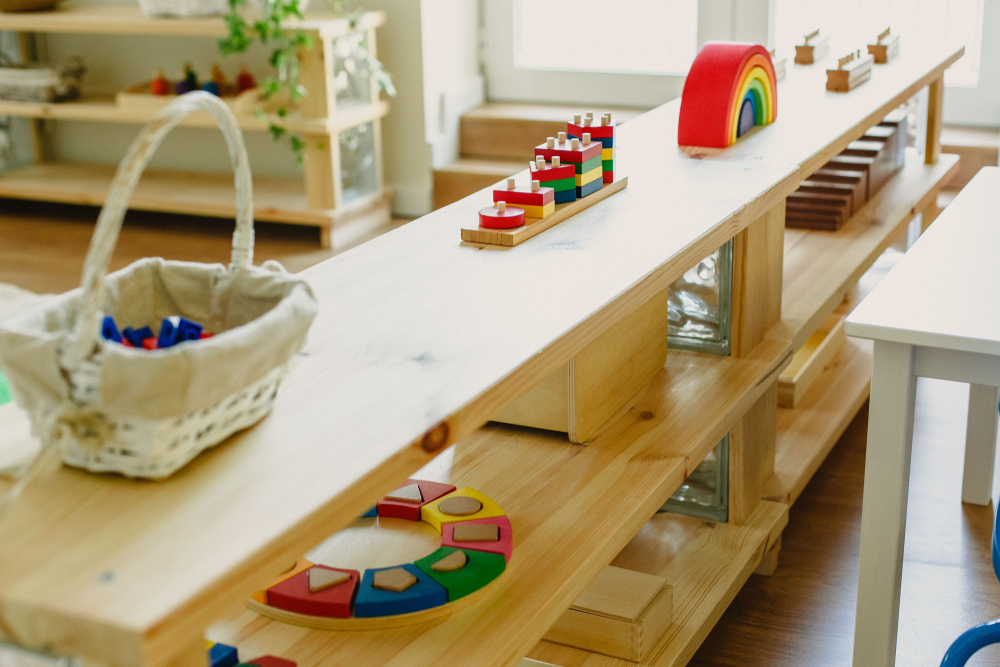
Storing your child’s materials on an eye-level shelf in your main living space is best. Anywhere between 6-12 toys or materials is a good number to have out at one time. Also, keep in mind that rotating the materials every few weeks is highly suggested.
Around 6-8 books can be set out as well. You can use a forward-facing bookshelf or basket to store them. As long as your child can see the front of the book when making a selection rather than the spine of the book.
Using an educational program such as Monti Kids will be of great help. This program is designed to take the guesswork out of finding Montessori materials suitable for your toddler.
Learn more about Monti Kids and how they can help you find age-appropriate Montessori materials. Just click here and use code HOLLY60 to get $60 off your first order.
Here are just a few materials your 18-21-month-old may be interested in:
- Bean Bags
- Strawberry Cutter
- Feather Duster
- Watering Can
- Garden Shovel
- Manual Juicer
- Pickler’s Triangle
- Clay/Playdough
- Hammer and Peg Set
- Grimms Rainbow
- Handbells
- Books
MONTESSORI ACTIVITIES
 As a quick reminder, try not to correct the child when they are concentrating. It is suggested to wait until they are finished and then model the correct way to use the material for them continuing to present and model the activity to them each time until they correctly use the item.
As a quick reminder, try not to correct the child when they are concentrating. It is suggested to wait until they are finished and then model the correct way to use the material for them continuing to present and model the activity to them each time until they correctly use the item.
Toddlers often repeat the same activity over and over again. This may seem funny to us as parents but it is your child’s way of understanding how the material works. Allow your child to repeat the activity as long as he or she sees fit. Most likely they will continue to do so for a few days and then fill complete one day and not be interested in the material again.
Throwing and getting frustrated is a toddler’s way of communicating that a task is too difficult or too easy. If your child continues to get upset with an activity it is best to take it out of rotation and bring it back out at a later date.
Here are some activities your 18-21 month old may enjoy:
- Making Clay Figures
- Jumping on Trampoline
- Swimming
- Using Bath Pouring Toys
- Play Hammer and Peg
- Tossing Bean Bags
- Kicking a Ball
- Stacking Cups
- Making Mud Pies
- Outdoor Painting
- Playing Handbells
- Paint Sticks
Click here to enroll in our 5 Days To A Montessori Home Challenge!
PRACTICAL LIFE
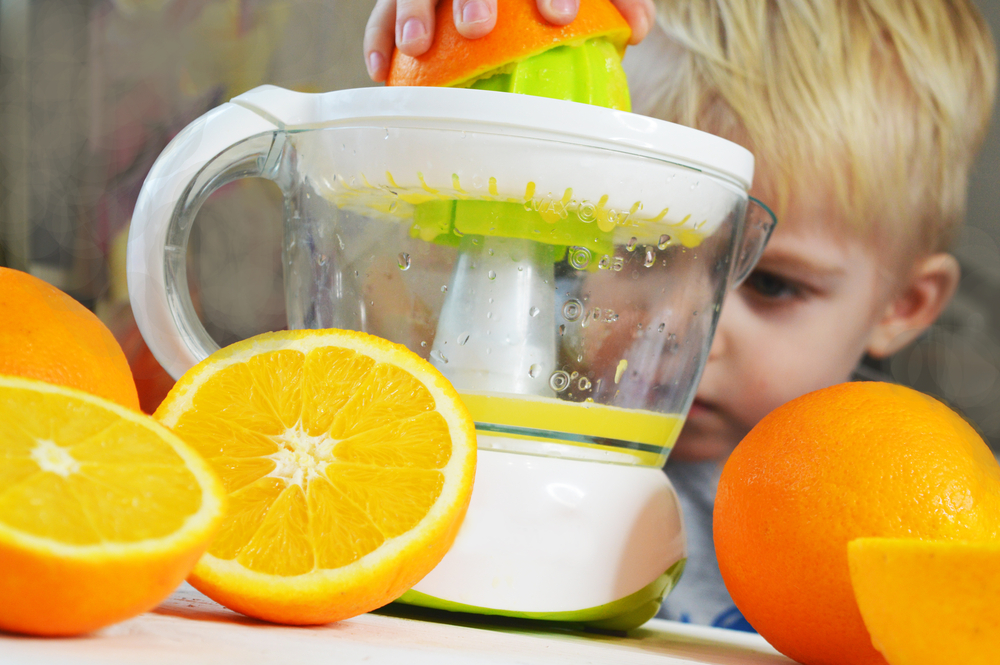
Practical life activities are important because they allow your child to feel part of a community. They promote sensorial exploration, language development, and independence.
Start to introduce practical life activities to your child by first observing your child’s interests. Present the activity to your child remembering to practice beforehand. Starting with one activity and building more and more. Practical life can be done in the kitchen, bathroom, outside, and just about anywhere in the home!
Start by trying one of these practical life activities and building from there:
- Buttering Toast
- Juicing Oranges
- Peeling an Egg
- Pouring Water
- Washing Body
- Dry Self Off After Bath
- Going To Toilet
- Wiping Sink
- Choose Clothes
- Help Dust
- Collecting Firewood
- Help Feed Pets
Click here to grab a free Practical Life Activity List.
SENSITIVE PERIODS
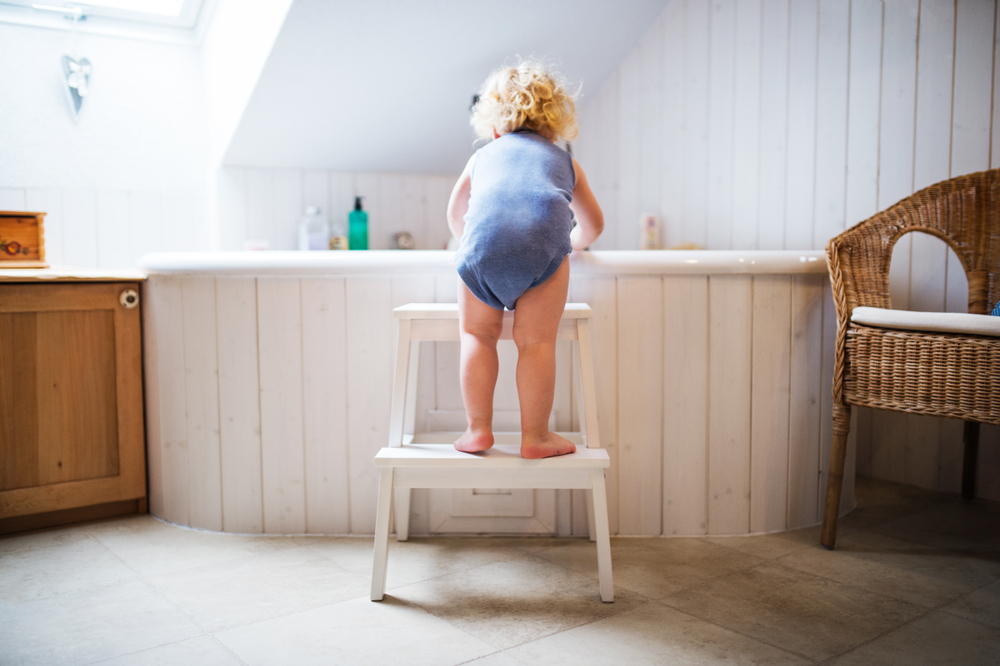
The child’s absorbent mind (age 0 – 6 years) is driven by what Maria Montessori identified as sensitive periods in development. Follow your child’s lead for his/her cues of sensitive periods beginning. Try not to underestimate your child’s ability or work. If he/she is doing certain work over and over, they are probably in their sensitive period for that work/task.
Here’s a list of sensitive periods your child may be experiencing at this age:
- Movement Birth-6 Years
- Gross & Fine Motor Development Birth-2.5 Years
- Language Birth-6 Years
- Sensory Skills Birth-5 Years
- Small Objects 1 Year – 3.5 Years
- Emotional Control Birth-2.5 Years
- Toilet Learning 12 Months-18 Months
- Order 1 Year – 3.5 Years
Learn more about sensitive periods and how they affect your child by clicking here.
Remember that your child is in their first plane of development. Maria Montessori described this time as the absorbent mind. Your child is watching you. You should be modeling the behavior you desire your child to have.
Ready to take the next step into Montessori living? Join us in The Montessori Learning Center to learn everything you need to know about Montessori with your 18-month-old to 21-month-old! Click the image below to learn more.
What questions do you have about Montessori with your 18-month-old – 21-month-old? Pop them in the comments below so I can help you get started with your Montessori journey!
Disclaimer: This isn’t the end all be all for Montessori with your 18 month old – 21-month-old. Montessori is largely based on following your child’s lead, knowing that every child is unique, there can not be one set standard for every child. Use this information as it suits your child.
Click Here to Leave a Comment Below
Hello
I am new to Montessori but am really liking and appreciating all that I am reading so far. My daughter is 3 and my son is 18 months old. I feel inspired with the Montessori methods but am anxious about changing how I parent and also scared that I am too late to implement with my eldest, even though I feel like she will really benefit from Montessori. She is an anxious and emotional young girl and I just want to help and encourage her to become confident and comfortable in her own capabilities. The same for my son, however I am not so anxious about him since he is younger. Any advice will be so much appreciated. Thank you
Alicia,
First off, it is never too later to make a change whether big or small! When first starting Montessori many try to do it all and quickly get overwhelmed. So I would make a list. What are the main Montessori aspects you would like to implement in your home. Then pick only one of those aspects and commit to a small manageable change that works towards that goal. It could be as simple as reading up about what freedom within limits means, incorporating your children in making one snack that week, or allowing your child to put the laundry in the washing machine with you. I would also try and sit down and really address the anxieties. What is it specifically that you are afraid might change? Are you afraid that you might try and not succeed? Are the fears justified? If not you can step past them. If they are you can address them and come up with ways to avoid those pitfalls.
xx
TTL Team Member
Hi Holly, I have 18-month old twins (boy-girl). I am struggling with how to manage my boy in a Montessori way when he hurts his sister many times a day (hitting, biting, pinching, yanking toys, shoving, etc.) The boy really likes be have his own time to play and move uninterrupted but it so often ends with sister in tears. I have tried to give them each a room to use for personal space but they always go to 1 room together unless I physically prevent it (baby gate, locked door, etc.). I say “I can’t let you hurt your sister.” when I block him. I am feeling confused about how to balance these needs and feelings. He might just be wanting other little boys to be rough and rambunctious with but with Covid-19 all that interaction is really limited. Your thoughts on this would be appreciated. Thanks! Cheers, Kat
Kat,
You mention Covid-19 changing your social options, and I think you may be right there. He might be missing that outlet and frustrated at the change. Are you able to go outside in your area? If so I would try to focus on more outside free play time. If you aren’t they I would try and focus on indoor gross motor activities. We used to create obstacle courses with anything we had around the house (tape for a line to walk on, toys to jump over, couch cushions to climb over, etc.). This may help him self regulate more.
As far as the moments when he is lashing out, I would try to just be firm and consistent. If you see him raise his hand to hit, grab his wrist and say “I won’t let you hit. If he’s getting too close, get between them and say “I won’t let you shove”. If he continues then I would say “I need to remove you from this area to keep everyone safe” and go and sit with him in a new area and validate feelings as necessary. They don’t have impulse control at this age so unfortunately only time, consistency, and addressing the underlying cause of the lashing out will generally have an effect.
xx
TTL Team Member
So what do I do when all she wants to do is put things in her mouth ….bath water ,sensory bins items ,and even if I wanted her to learn to spread jam/butter on toast -she would just eat the jam …
It’s why I can’t get her to beat an egg -she wants to eat it and that’s risky where I come from .
Susan,
The mouthing stage lasts longer for some children than others. From birth, your child has learned to explore with their mouth. This need to put everything in their mouth can carry on into toddlerhood making parenting more difficult especially if your child is going through their sensitive period for small objects as well. The only thing to do is to keep your environment safely prepared until they are out of this stage. It’s ok to explore the jam when spreading (my daughter always ate the butter!)it is part of the experience but like you mentioned raw egg wouldn’t be safe so keep a close eye when using more dangerous materials. Just keep modeling the correct way and she will eventually learn that the jam is supposed to go on the toast. 🙂
Hi Nicole, I am not sure where this exact one is from but I do know they sell something similar at IKEA. Here is a link to the table at IKEA: https://www.ikea.com/au/en/catalog/products/60293062/ 🙂 Holly xx
This is so helpful. Our youngest son has Down syndrome and has just turned four. I didn’t look into Montessori for our other children, but I feel it is right for him. Many of the things in this post are relevant to him and so helpful for me. We homeschool our kids so our home is always busy and sometimes loud and chaotic but I am working towards a simple, uncluttered, easy access environment for Michael’s toys and resources, using your recommendations.
Once again, thank you!
Leave a Comment:
